- Home
- slideshows
- miscellaneous
- Scientists spent three weeks exploring the Gulf of Mexico's uncharted deep-sea habitats - see the mind-blowing images they brought back
Scientists spent three weeks exploring the Gulf of Mexico's uncharted deep-sea habitats - see the mind-blowing images they brought back
Here's the Okeanos Explorer in port. On this expedition, the scientists spent three weeks exploring the Gulf of Mexico, trying to understand the rarely visited depths.

This trip follows an expedition NOAA conducted last year to explore the Gulf of Mexico. On this most recent trip, the scientists sought to explore deep coral and sponge communities, bottom fish habitats, undersea canyons, shipwrecks, and a rich variety of ecosystems on the seafloor.
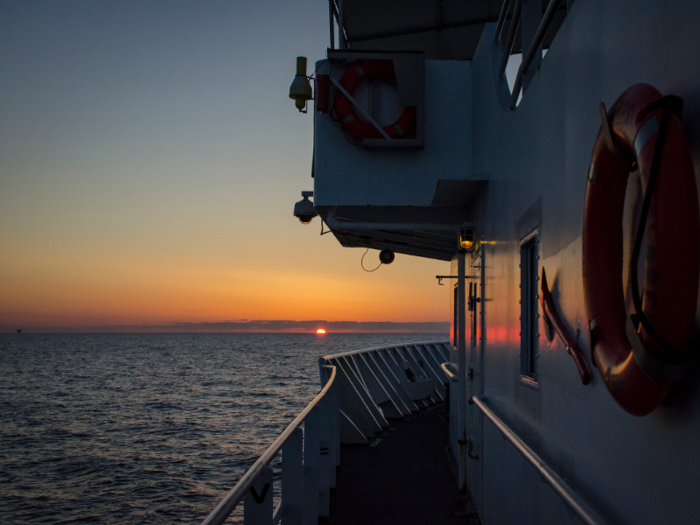
See images from the previous expedition in December 2017.
The scientists used remotely -operated submersibles, like the Deep Discoverer pictured here, to access the deepest parts of the Gulf and to film and photograph rarely seen species.

Here's a submersible in action, surveying the edge of the Florida Escarpment, which plunges off the edge of Florida into the depths.
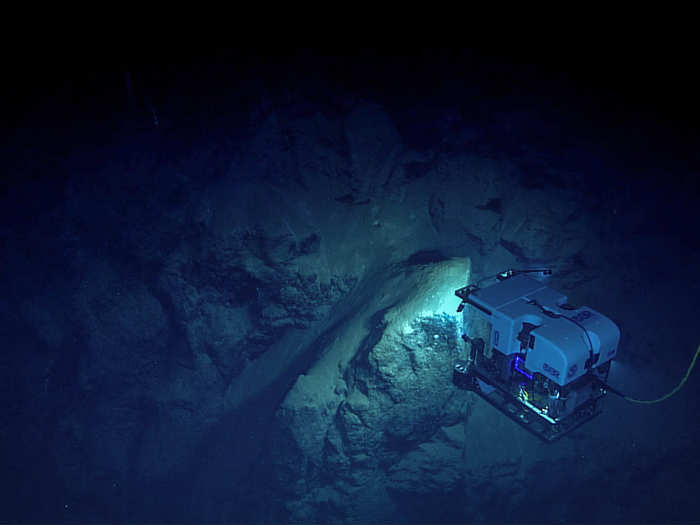
While scientists sought out the pitch-black depths, they also surveyed shallower waters, like this coral reef 20 feet below the Florida Keys.
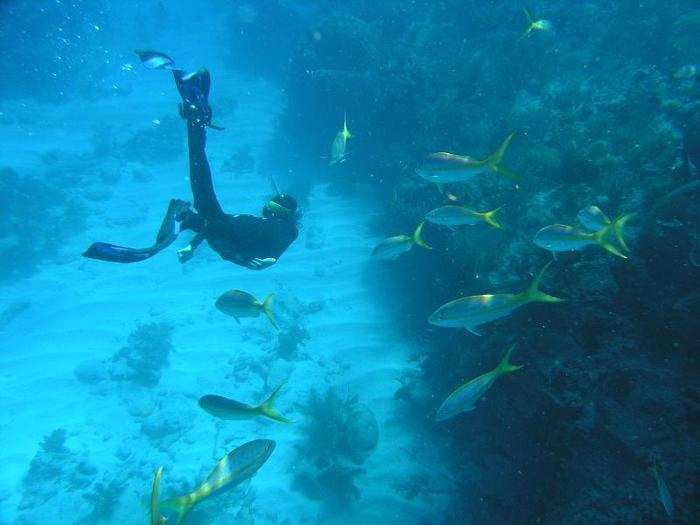
The scientists were astounded by the behavior of some the creatures they witnessed. Here, a sea cucumber swims thousands of feet below the surface.
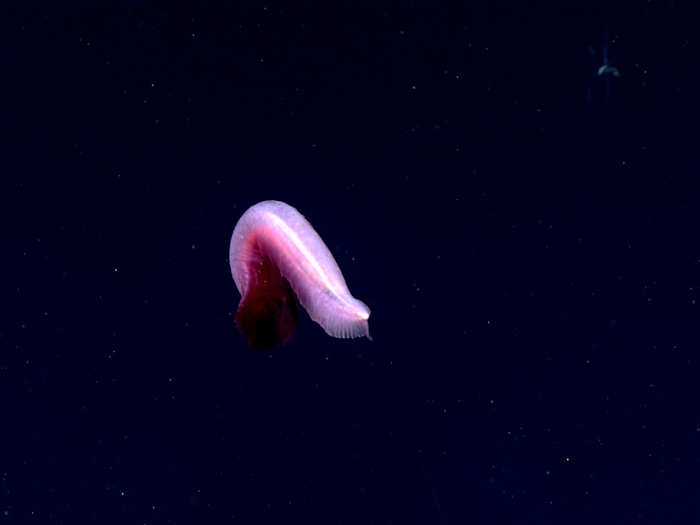
One scientist compared the footage of the sea cucumber swimming to a "ballet." Scientists are now trying to understand how these creatures can regulate their buoyancy to move freely about the water column.
Scientists also witnessed this balloon-like sea cucumber swimming around. You can see organs through its translucent tissue.
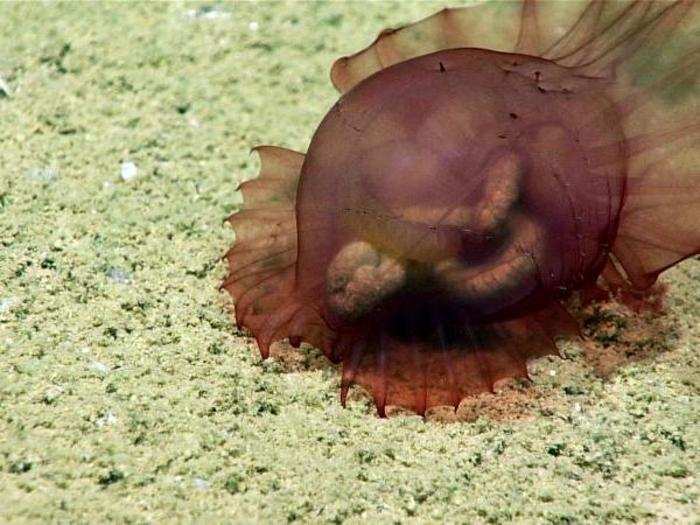
This unidentified squid stumped the researchers. A cephalopod expert aboard the ship described it as "probably the most bizarre squid I’ve ever seen."
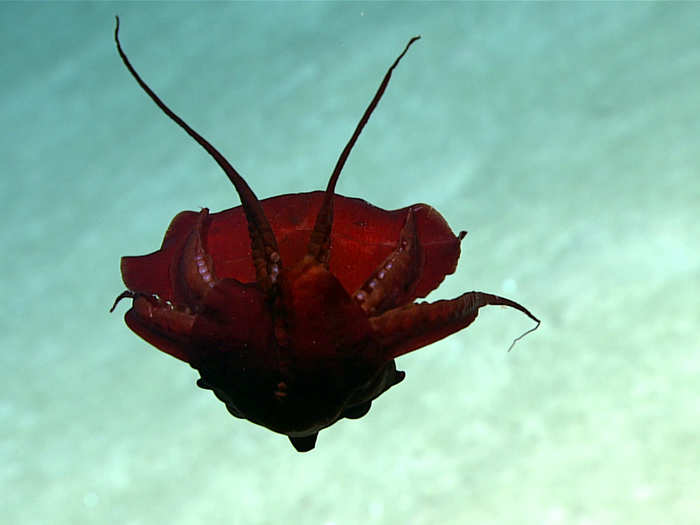
The scientists still aren't sure why the squid adopted this seemingly defensive position. They think it could be because of an injury, as the squid seemed to have some tentacles missing, though they can't be sure because this particular species has never been observed alive before.
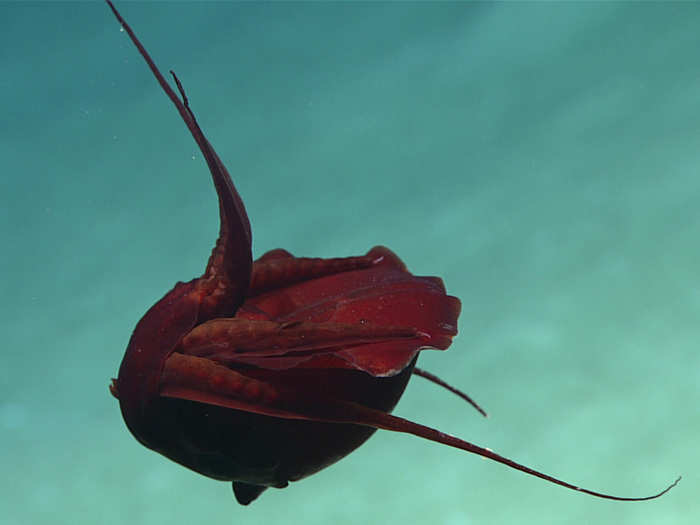
The researchers also came across strange sea stars on their dives, some of which had never been recorded in the Atlantic ocean before.
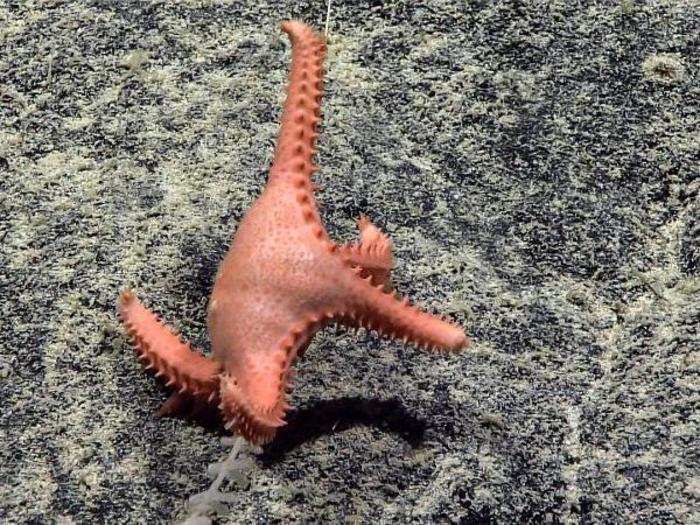
The sea stars have pointed tube feet to help them scuttle quickly across the sediment, and they tend to congregate near seamounts.
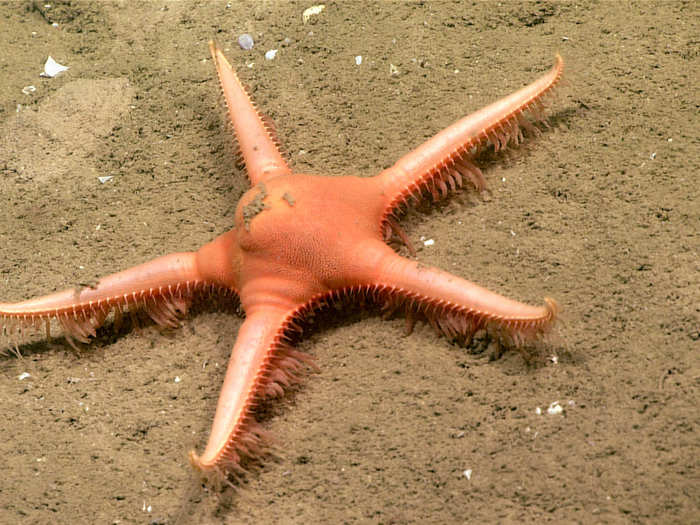
Check out a video of this sea star scuttling around 10,000 feet below the surface.
This rarely seen sea star is thought to be one of the oldest sea star species in existence. Scientists found evidence that these sea stars were present in the Jurassic era as fossils, meaning the species is hundreds of millions of years old.
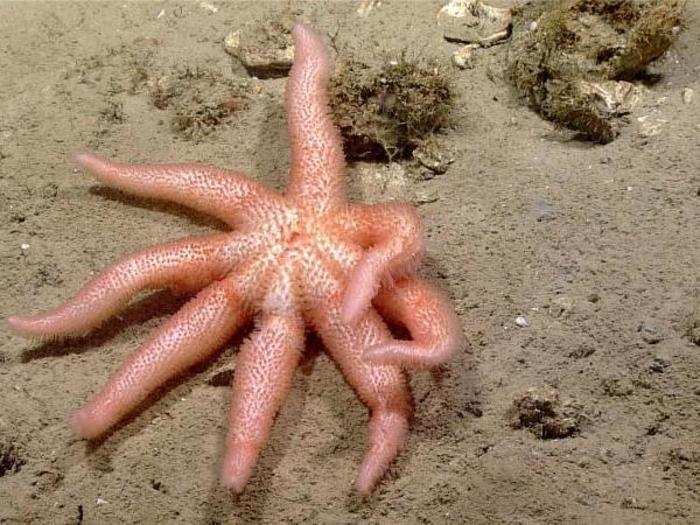
Sea stars, like many bottom-dwelling creatures, have a voracious appetite. Here, this one consumes a translucent glass sponge.
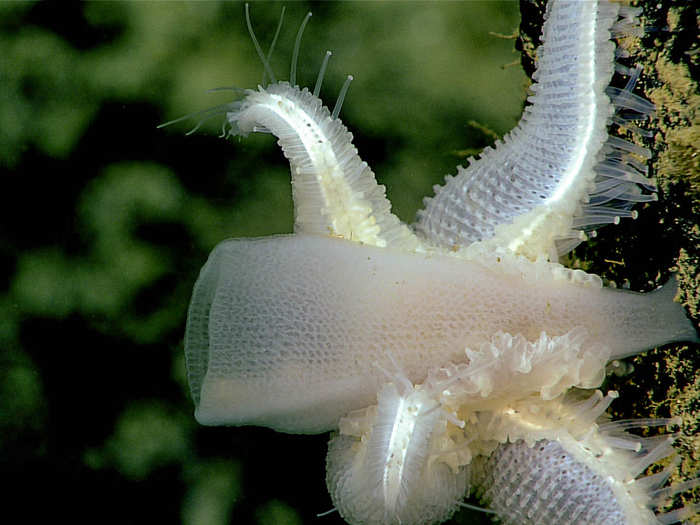
It's a strange, alien scene from another world.
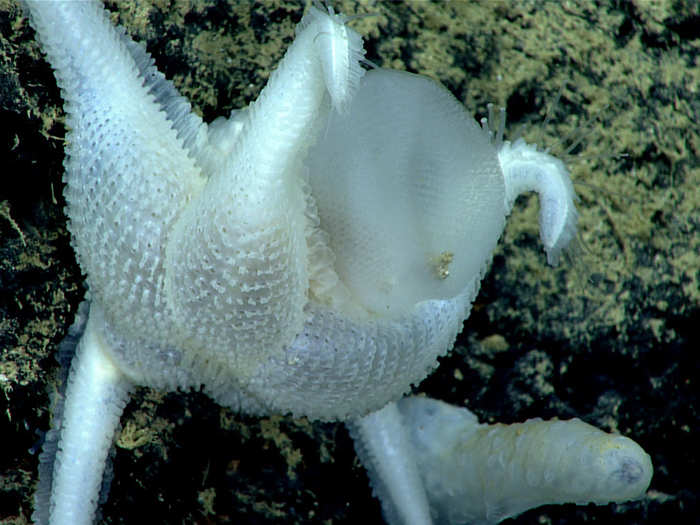
Like their shallow-water counterparts, corals form splendid reefs thousands of feet below the surface.
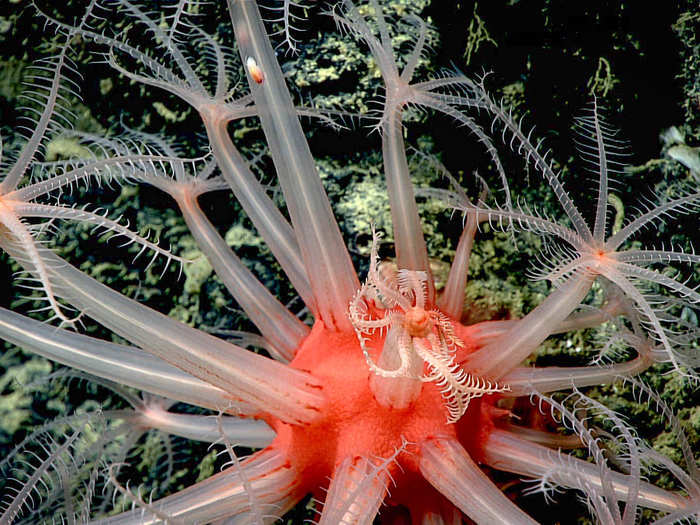
They're often just as colorful too, as evidenced by this brilliant purple octocoral.

Octocorals are common in deep-sea environments. Corals are really a collection of tiny creatures called polyps — these polyps each bear eight tentacles and share a stomach, giving the octocoral its name.
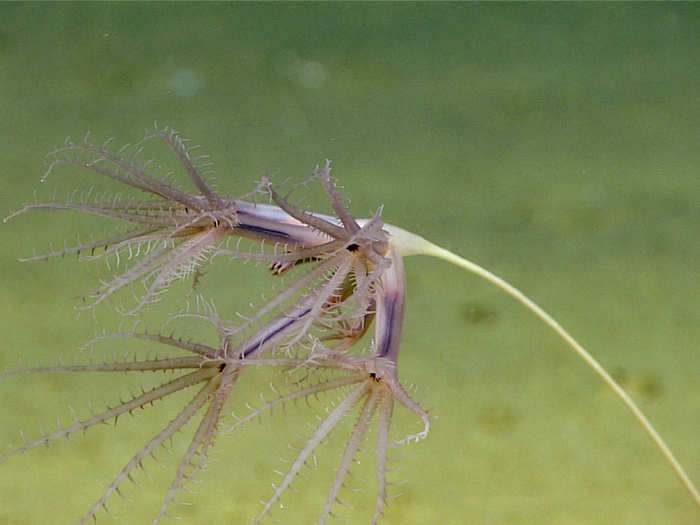
These octocorals provide a habitat for squat lobsters, a deep water lobster species.
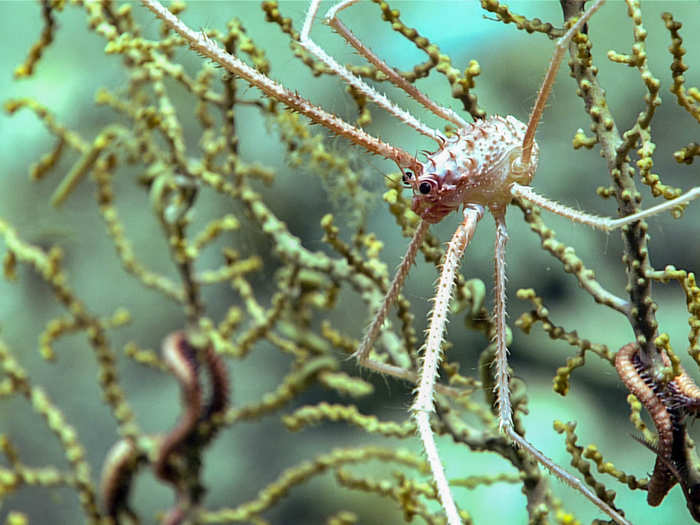
Scientists think that certain species of these corals are often associated with specific species of lobster, but more research needs to be done.
Here's another example of a coral, with a different species of squat lobster using it as a safe haven.
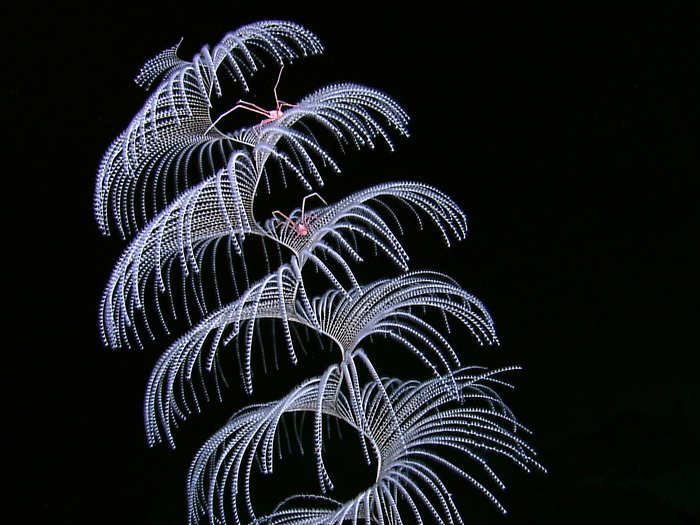
Like their shallow-water brethren, these deep-sea corals are filter feeders, positioning themselves in prime locations to catch plankton.

Beyond corals, the scientists caught magnificent photos of some truly bizarre deep sea dwellers, like this cusk eel. The eel hunts by resting in the sediment — it's large eyes help it spot prey swimming above it in the dark.
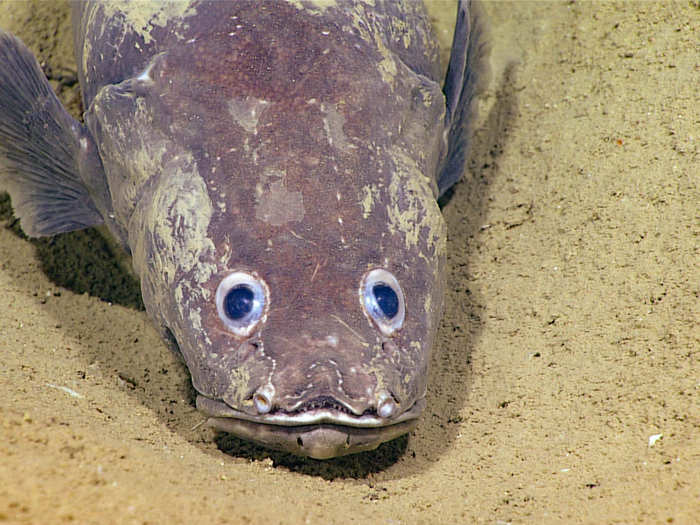
This lobster is completely blind, spending most of its life in burrows in the sediment. This one was caught outside at around 2,215 feet down.
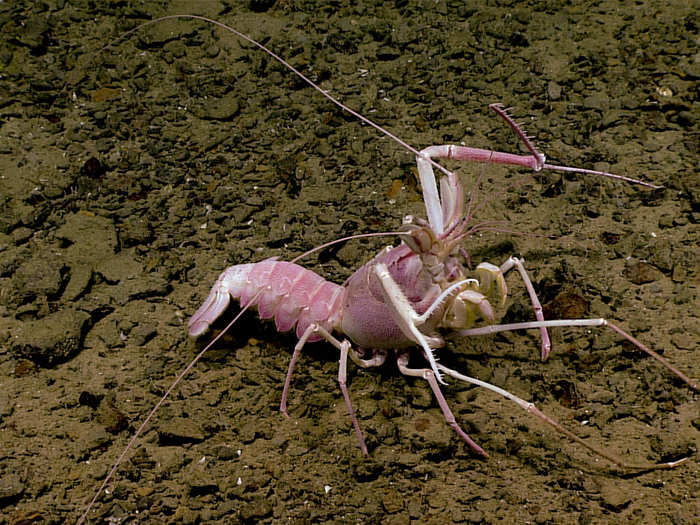
Skates cruise above the sediment looking for prey. This one has a parasitic isopod — a pill-bug-like creature — attached.
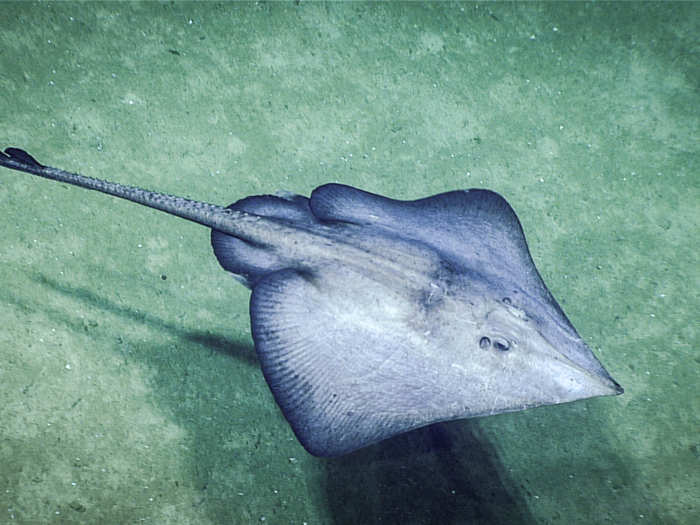
This grumpy looking fish is a goosefish, caught on camera around 2,100 feet below the surface. The goosefish uses the lures seen between its eyes to help capture its prey.
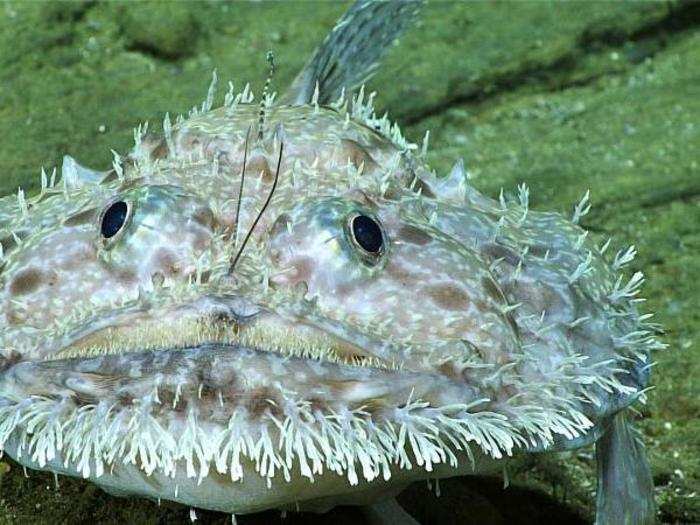
This long-legged shrimp, like the blind lobster, prefers to spend its time in burrows. This one was captured cruising around the sediment at over 9,000 feet down.
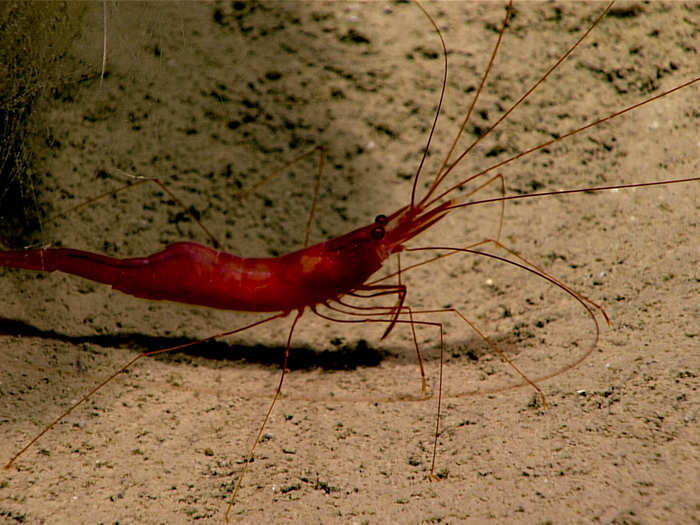
The researchers observed some especially weird octopus behavior. These two appear to be wrestling for den space underneath an old shipwreck.
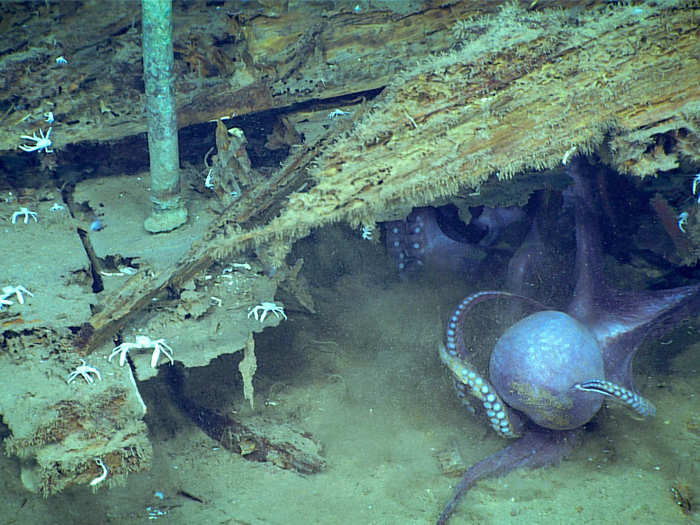
To see the full video of the octopus fight, which the researchers dubbed a 'Kraken Attack.'
The loser, pictured here, attempts to bury beneath the sediment after its defeat.
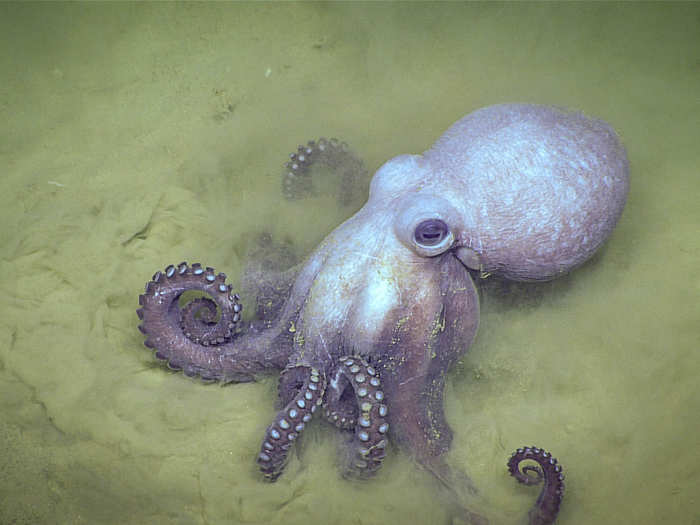
Scientists identified this long, narrow squid as a Echinoteuthis atlantica, a common deep-sea dweller found in the Atlantic.
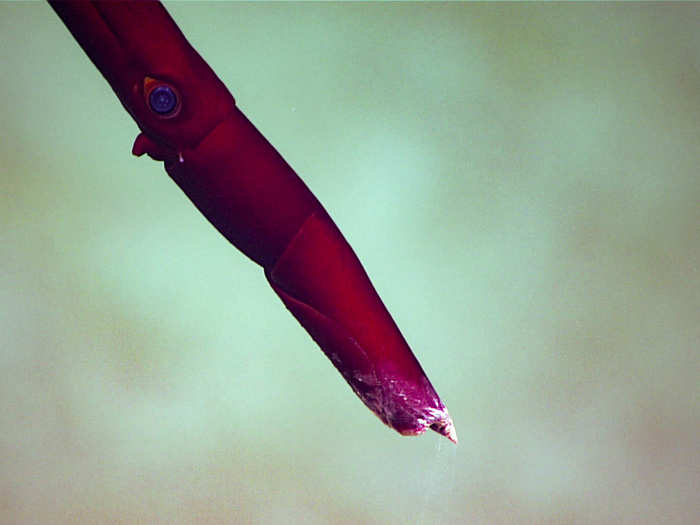
Among the most bizarre deep sea dwellers are these ctenophores, or jellyfish. This one, found with its tentacles fully extended around 4,790 feet deep, almost looks like something out of Star Wars.
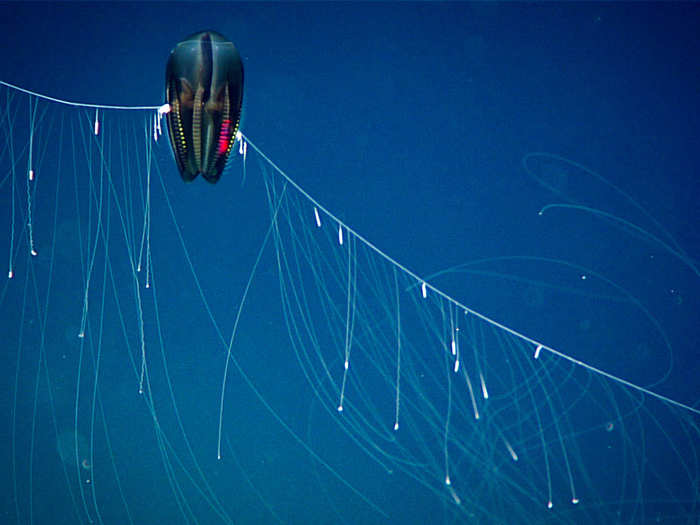
One of the least understood environments in the deep, these brine pools are areas where extremely saline water sinks to the bottom. The brine pools kill the surrounding shellfish.
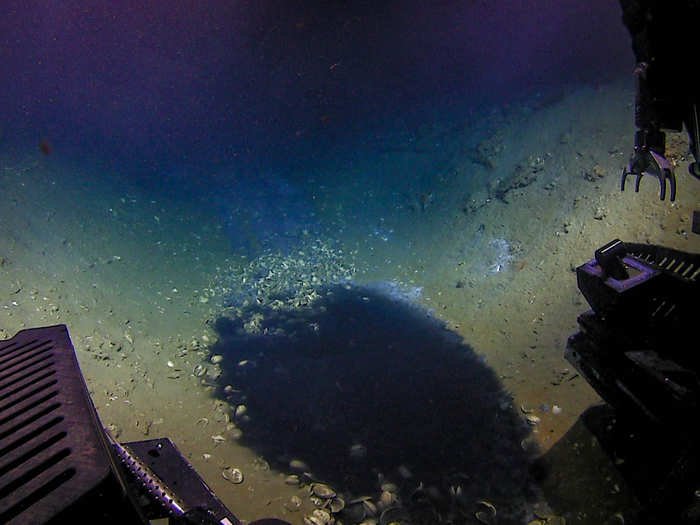
You can see the dead mussels surrounding the pool. The pools form because the salty water is denser than the surrounding water, so it sinks to the lowest point.
These tubeworms employ a unique strategy to survive on the seafloor. In the absence of any sunlight, they use bacteria stored within their organs to convert hydrogen sulfide into the sugars and amino acids needed for life.
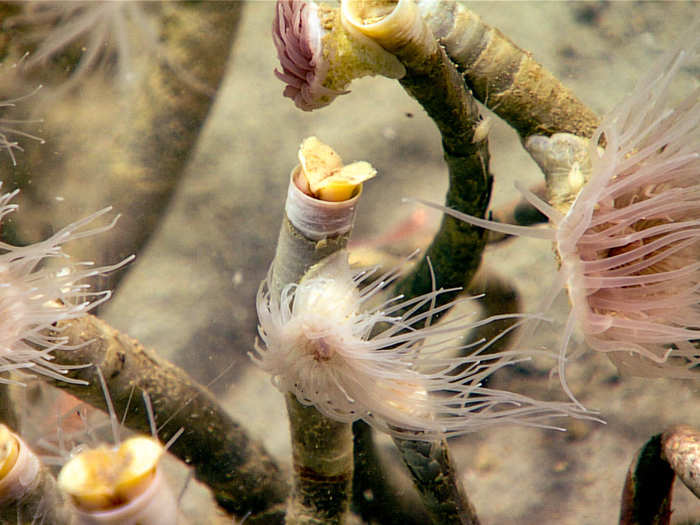
Beyond surveying the rich marine life, the team explored previously unidentified shipwrecks, some of which had sat for decades on the seafloor.
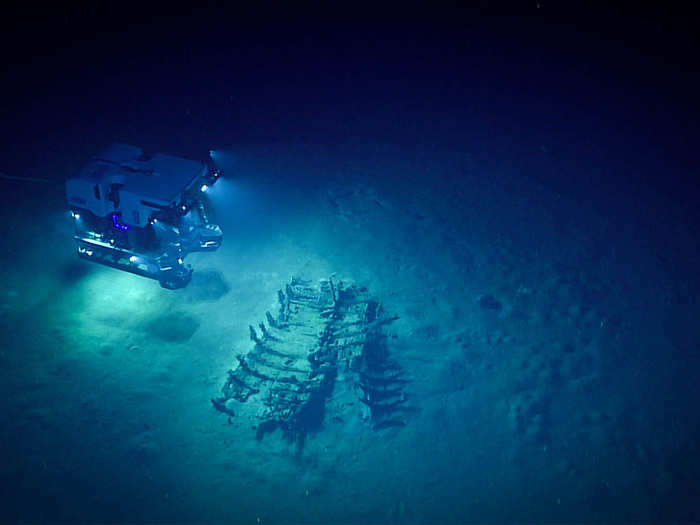
On the first dive, the ROV came across this tugboat, named New Hope. The tug went down during a severe tropical storm in 1965, and though the ship was lost, the Coast Guard managed to save everyone on board.
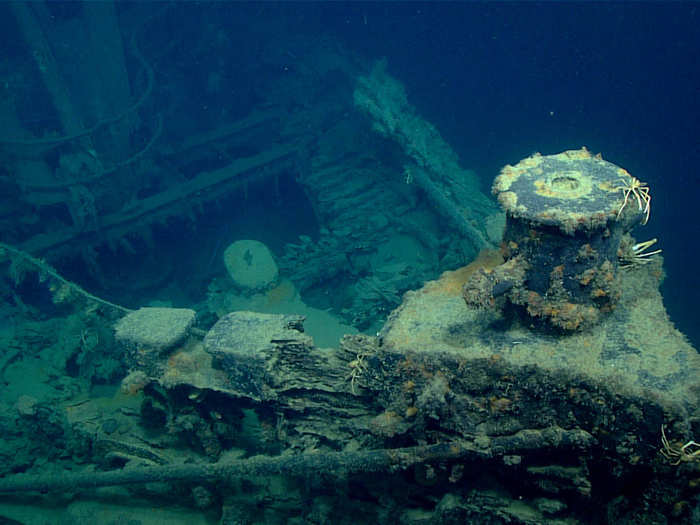
Shipwrecks can often be a cornucopia of marine life. Here, a deepwater red crab sits on the tug. These crabs are a commercially harvested species.
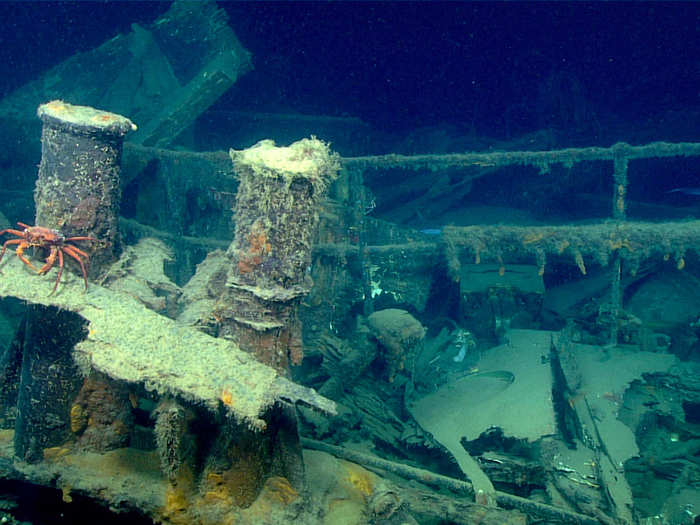
Here, a plastic milk jug dangles from the wreck. Even in the most remote environments, there are still unfortunate signs of humanity.
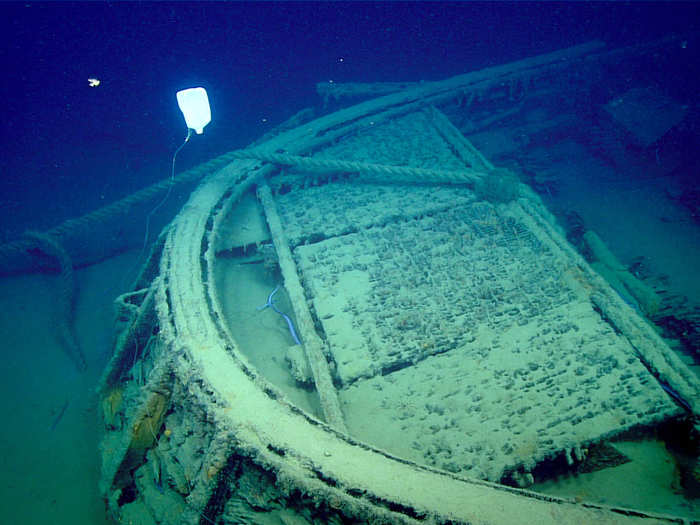
Popular Right Now
Popular Keywords
Advertisement